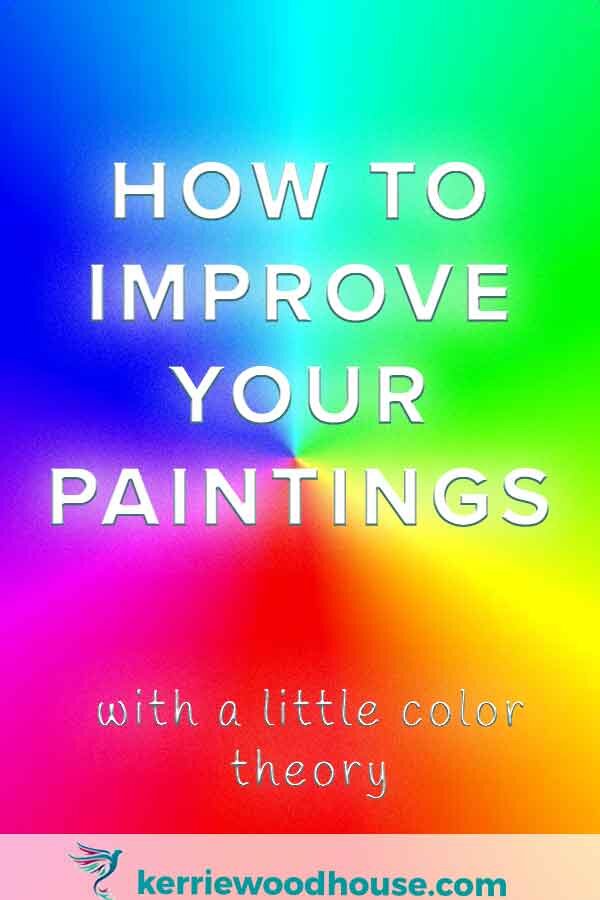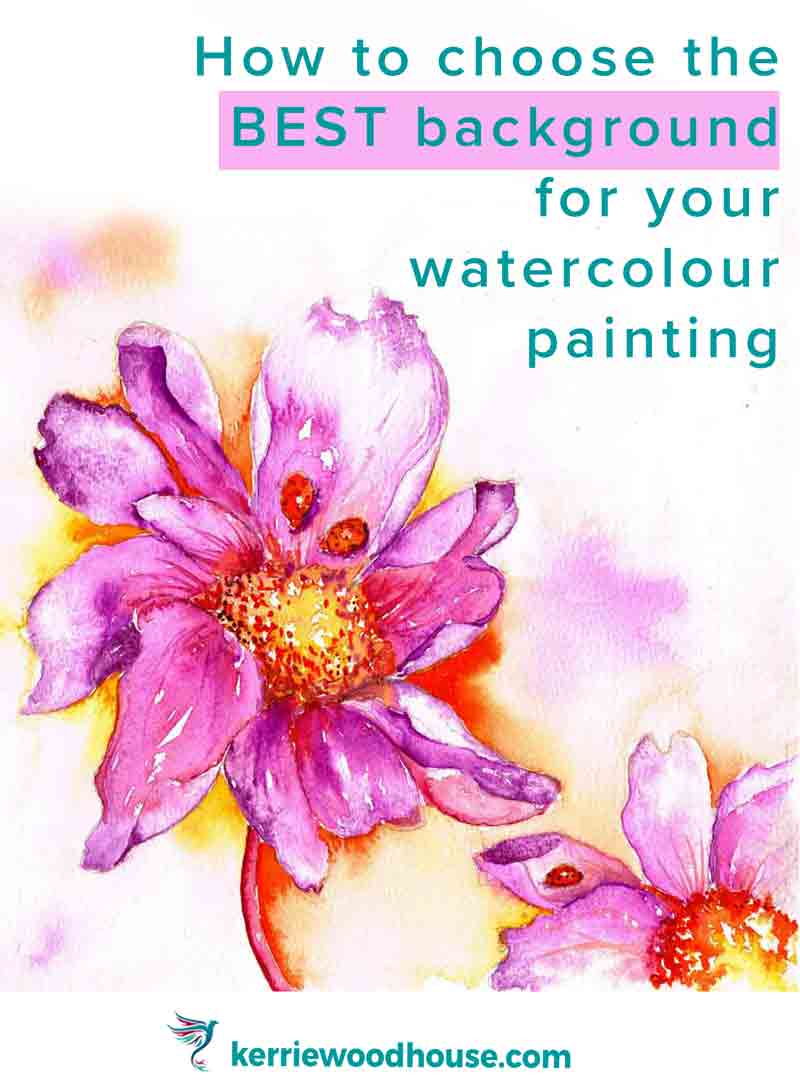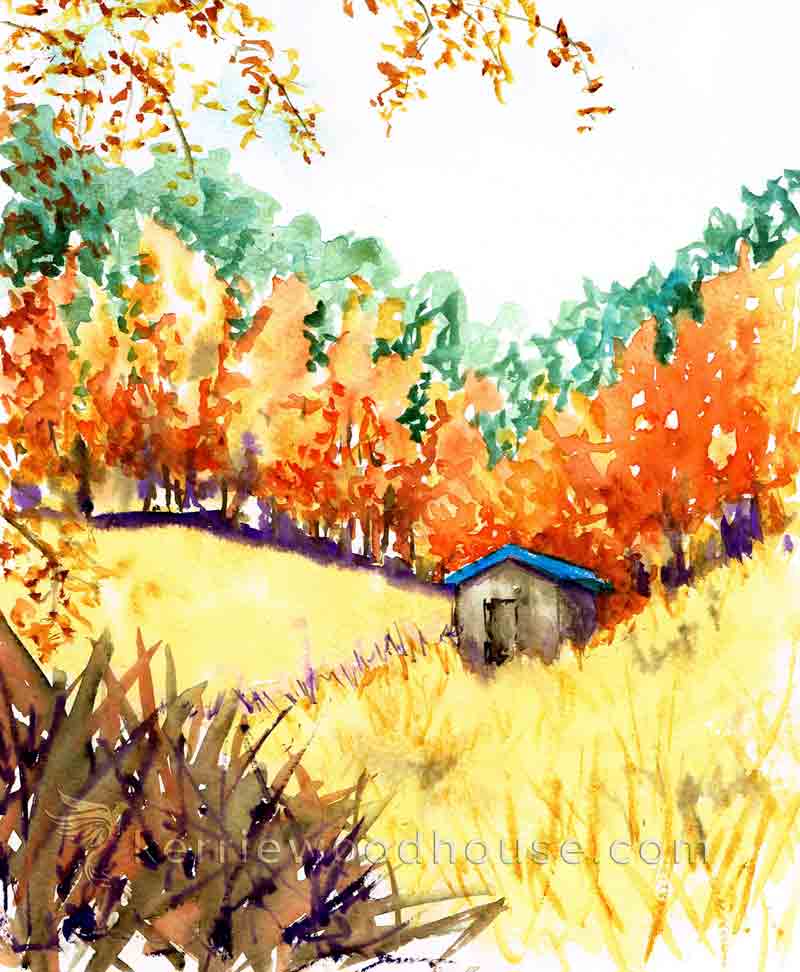How to improve your paintings with a little complementary color theory
Most painters I know are constantly looking for ways to improve their paintings.
Painting is a joyful experience most of the time. But sometimes a painting turns out a little disappointing. 😔Take heart - it’s not you, its just part of the process, and there is always a way to improve.
If you have a painting that is a little ‘meh’, and are looking for a suggestion on how to improve it, read on… a pop of complementary color theory might just be worth a try.
I also have a video with an example of the use of complementary color from one of my own paintings at the end of this post.👇
I don't know about you, but I paint for fun.
So when I see the word the theory I frown a little. Don’t get me wrong, I am also a giant nerd, and for many years was even a professional nerd. But that’s another story.
The thing I wanted to share today was just a little nugget of color theory that I think can improve a painting. It’s fun and easy so you can just pretend I didn't use the word theory at all.
Let's just talk about color.
Color is a huge reason for painting! Who doesn’t love colour? Each one has such personality, don’t you think? And just like people they are so influenced by each other.
You know how there are some people you meet who just bring out the best in you? The fun side. Party friends, if you like…
Well, each colour has a party friend. It is a complementary color that when placed by its party friend makes both colours more interesting. And probably better dancers.
These party friends (complementary colors) sit opposite each other on the color wheel. Presumably they have been separated because they have too much fun when they are together and distract everyone else. 😉
Anyway, the important thing is, that if you want to improve your painting with a little vibrancy and excitement you need to reunite those party friends.
A tiny pop of a complementary colour placed in your painting will make those colours sing.
So let’s take a look at that color wheel and figure out who’s who.
Complementary colours are directly opposite each other on the colour wheel.
Some example of complementary pairs which are indicated on the color wheel graphic above are:
Red and green
Yellow and purple
Blue and orange
If you are considering a colour that is in between, for example a yellowy green, then you will find its corresponding complement directly opposite too - in the case of yellowy green it would be red violet.
Interestingly (only if you are actually into colour theory after all 😉) the complementary colour of each primary colour is the colour you get by mixing the other two primaries.
Since we are sneaking in a bit of that theory, that colour you get by mixing two primaries is what is called a secondary colour.
Side note: If you are shaking your head and saying that these days the primary colours are not red, yellow and blue but cyan, magenta and yellow like your printer ink, then we are going to have to go full nerd and really dive into colour theory. That seems like the subject of a whole other post - this one right here.
Whether you go for the CMYK (cyan, magenta, yellow) model or the RYB (red, yellow, blue) model I think that the simple approach of looking for the opposite colour on the colour wheel will suffice for getting you into the right ballpark when it comes to finding a good colour to spice up your painting!
If you want to improve your paintings you can try adding a bit more excitement and interest. Both of those can come from increasing contrast. And you get a high contrast from a pair of complementary colours.
Let me show you what I mean.
I painted an autumn landscape - my favourite season (keep reading to find the video of it). The predominant colours in my painting were yellows and oranges given the season. There is nothing wrong with choosing an analogous color scheme ie sticking to the yellows and oranges that sit next to each other on the color wheel. And yes, I did just slip in some more theory… see it’s not so bad…
Here is an example of a different autumn painting from the same series that uses only colours that are next to each other on the colour wheel - reds, oranges and yellows.
There can be a sophisticated harmony to a painting that sticks to analogous colours. There is no right or wrong, it is just a question of the sort of mood you want to evoke. And in the landscape I was painting, I wanted a bit of zing. Time for a complementary color!
Nestled in the orange trees is a little shed of some sort. I opted to give it a blue roof, since blue is the complementary colour to orange. That was so much fun that I decided to do a bit more. The grassy foreground is all yellow and gold, so I chose to put in a purple to indicate the shadow beneath the trees, since purple is the complementary colour for yellow.
You can see the whole painting process in the video below and hear a little more about my thoughts on choosing colours as a I paint.
There is one word of caution that I feel I do need to mention on the subject of complimentary colours.
Even party friends know that we all need a bit of space. Place these complementary colours next to each other - they sing.
Mix them together…. And it all turns to mud. Well, that’s what painters call it. If you mix the complementaries you have effectively mixed all three primaries. They cancel each other out and become a neutral grey/brown (affectionately known as mud, in the painting community).
So when you paint with watercolour and you want to use the complementaries bear in mind that allowing them to mix by agitating them together with your brush either on the palette or the paper will create a neutral grey.
But by using a wet on dry technique you can keep a very distinct separation. If you are very mindful of the amount of water and the concentrations of paint you are working with you can drop in colour and let the paint decide where one colour will end and how it will merge with its neighbour to avoid the mud.
If you need some help figuring out how to work with these watercolour techniques and figure out the optimal paint to water ratios, this class might be just what you are looking for.
Are you on your own painting journey?
One of these might be useful…












